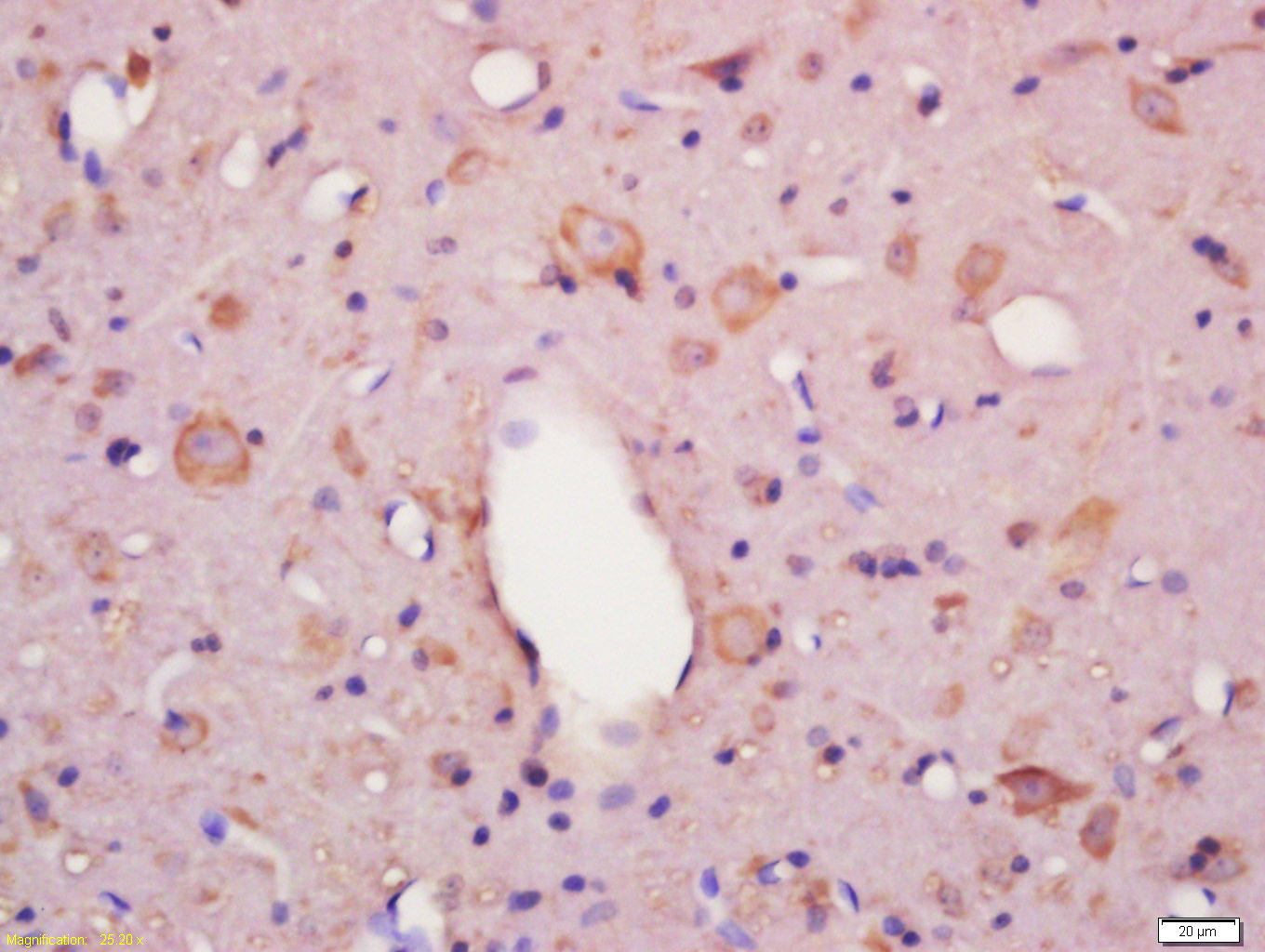
Rabbit Anti-Frizzled 6 antibody
Frizzled 6 seven transmembrane spanning receptor; Frizzled drosophila homolog of 6; Frizzled family receptor 6; Frizzled homolog 6 (Drosophila); Frizzled homolog 6; Frizzled-6; Frizzled6; Fz 6; Fz-6; Fz6; FZD 6; Fzd6; FZD6_HUMAN; Hfz 6; hFz6; NDNC10.
View History [Clear]
Details
Product Name Frizzled 6 Chinese Name 卷曲蛋白6抗体 Alias Frizzled 6 seven transmembrane spanning receptor; Frizzled drosophila homolog of 6; Frizzled family receptor 6; Frizzled homolog 6 (Drosophila); Frizzled homolog 6; Frizzled-6; Frizzled6; Fz 6; Fz-6; Fz6; FZD 6; Fzd6; FZD6_HUMAN; Hfz 6; hFz6; NDNC10. Research Area Tumour Cell biology Developmental biology Signal transduction Stem cells G protein-coupled receptor G protein signal Immunogen Species Rabbit Clonality Polyclonal React Species Rat, (predicted: Human, Mouse, ) Applications ELISA=1:5000-10000 IHC-P=1:100-500 IHC-F=1:100-500 ICC=1:100-500 IF=1:100-500 (Paraffin sections need antigen repair)
not yet tested in other applications.
optimal dilutions/concentrations should be determined by the end user.Theoretical molecular weight 77kDa Cellular localization The cell membrane Form Liquid Concentration 1mg/ml immunogen KLH conjugated synthetic peptide derived from human Frizzled 5/Wnt receptor: 11-110/706 <Extracellular> Lsotype IgG Purification affinity purified by Protein A Buffer Solution 0.01M TBS(pH7.4) with 1% BSA, 0.03% Proclin300 and 50% Glycerol. Storage Shipped at 4℃. Store at -20 °C for one year. Avoid repeated freeze/thaw cycles. Attention This product as supplied is intended for research use only, not for use in human, therapeutic or diagnostic applications. PubMed PubMed Product Detail The frizzled gene, originally identified in Drosophila melanogaster, is involved in the development of tissue polarity. The mammalian homolog of frizzled, as well as several secreted mammalian frizzled-related proteins (FRPs), have been described. The frizzled proteins contain seven transmembrane domains, a cysteine-rich domain in the extracellular region and a carboxy-terminal Ser/Thr-xxx-Val motif. They function as receptors for Wnt and are generally coupled to G proteins. The frizzled-5 protein is believed to be the receptor for the Wnt-5A ligand. The cysteine-rich domain of frizzled-8 blocks endogenous Wnts and the effects of Wnt-1 and Wnt-5 on proliferation. The mouse frizzled-8 gene, which encodes a Wnt receptor, is a potent cancer-associated activator of the ∫-catenin-TCF pathway. The frizzled-8 gene contains no introns. Frizzled-8 mRNA has been detected in fetal brain and kidney, and also in adult pancreas, skeletal muscle, kidney and heart. Frizzled is highly expressed in HeLa S3 (cervical uterus cancer) cells and A549 lung cancer cells.
Function:
Receptor for Wnt proteins. Most of frizzled receptors are coupled to the beta-catenin canonical signaling pathway, which leads to the activation of disheveled proteins, inhibition of GSK-3 kinase, nuclear accumulation of beta-catenin and activation of Wnt target genes. A second signaling pathway involving PKC and calcium fluxes has been seen for some family members, but it is not yet clear if it represents a distinct pathway or if it can be integrated in the canonical pathway, as PKC seems to be required for Wnt-mediated inactivation of GSK-3 kinase. Both pathways seem to involve interactions with G-proteins. May be involved in transduction and intercellular transmission of polarity information during tissue morphogenesis and/or in differentiated tissues.
Subcellular Location:
Membrane; Multi-pass membrane protein. Cell membrane; Multi-pass membrane protein (By similarity).
Tissue Specificity:
Detected in adult heart, brain, placenta, lung, liver, skeletal muscle, kidney, pancreas, thymus, prostate, testis, ovary, small intestine and colon. In the fetus, expressed in brain, lung, liver and kidney.
Post-translational modifications:
Ubiquitinated by ZNRF3, leading to its degradation by the proteasome (By similarity).
DISEASE:
Defects in FZD6 are the cause of nail disorder non-syndromic congenital type 10 (NDNC10) [MIM:614157]. NDNC10 is a nail disorder characterized by a variable degree of onychauxis (thick nails), hyponychia, and onycholysis of all nails, with claw-shaped fingernails in some individuals. No other anomalies of ectodermal tissues, including hair, teeth, sweat glands, or skin, are noted, and individuals with dysplastic nails have normal hearing and normal psychomotor development.
Note=Rare non-synonymous variants in FZD6 may contribute to neural tube defects, congenital malformations of the central nervous system and adjacent structures related to defective neural tube closure during the first trimester of pregnancy.
Similarity:
Belongs to the G-protein coupled receptor Fz/Smo family.
Contains 1 FZ (frizzled) domain.
SWISS:
O60353
Gene ID:
8323
Database links:
UniProtKB/Swiss-Prot: O60353.2
Product Picture
Antigen retrieval: citrate buffer ( 0.01M, pH 6.0 ), Boiling bathing for 15min; Block endogenous peroxidase by 3% Hydrogen peroxide for 30min; Blocking buffer (normal goat serum,C-0005) at 37℃ for 20 min;
Incubation: Anti-Frizzled-6 Polyclonal Antibody, Unconjugated(SL13218R) 1:200, overnight at 4°C, followed by conjugation to the secondary antibody(SP-0023) and DAB(C-0010) staining
Bought notes(bought amounts latest0)
No one bought this product
User Comment(Total0User Comment Num)
- No comment



 +86 571 56623320
+86 571 56623320
 +86 18668110335
+86 18668110335

